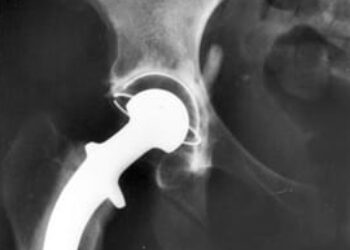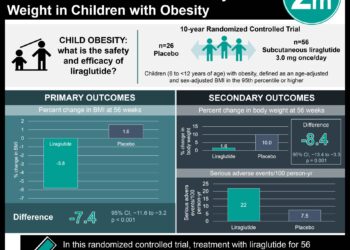No link between cesarean delivery and BMI in later childhood
1. Examination of anthopometric data on infants from 2 Danish prospective cohorts showed that infants born by cesarean delivery (CD) vs. vaginal delivery had significantly higher BMI at 6 months. However, this difference did not continue into later childhood and adolescence.
2. There was no significant difference in body fat percentage and compartment-specific body fat percentage for infants born by CD vs. vaginal delivery.
Study Rundown: Since the 1970s, increase rates of obesity have been reported among children and adolescents in developing countries. Over the same time period, the prevalence of CD has also increased. In this prospective cohort study, researchers investigated the association between CD and patterns in BMI and fat percentage in early childhood to adolescence. Researchers used data from 2 Danish birth cohorts: The Copenhagen Prospective Studies on Asthma in Chilldhood 2000 (COPSAC2000) and COPSAC2010. COPSAC2000 was high-risk maternal asthma cohort with children followed until 13 years of age, and COPSAC2010 included a cohort of pregnant women participating in a randomized controlled trial of fish oil supplementation and vitamin D. Researchers found that BMI was significantly higher at 6 months and 1 year of life for infants born by CD vs. vaginally in the 2010 and 2000 cohorts, respectively. However, these differences became nonsignificant for all following time points. Additionally, both cohorts demonstrated no significant differences in body fat percentage and compartment-specific fat percentage for infants born by CD vs. vaginally. Limitations include underpower for 5- and 13-year data points. These results suggest that overall, CD (when compared to vaginal delivery) is not associated with overweight and obesity later in life.
Click to read the study, published today in Pediatrics
Relevant Reading: The health implications of birth by cesarean delivery
Study Authors, Hans Bisgard, MD, DMSc and Rebecca Vinding, MD-PhD Student, talk to 2 Minute Medicine: Copenhagen Prospective Studies on Asthma in Childhood, Health and Medical Sciences University of Copenhagen and Danish Pediatric Asthma Center, Gentofte Hospital, University of Copenhagen, Gentofe, Kobenhavn.
“There has been a growing conception that delivery by cesarean section (CS) leads to obesity later in life. We found that Danish children delivered by CS had a higher BMI at 6 months of age, however they were not in bigger risk of obesity later in life. CS might only be a risk factor if the child grows up in an environment with other risk factors for obesity.”
In-Depth: [prospective cohort] The COPSAC2000 cohort included 411 children followed until 13 years of age, and the COPSAC2010 cohort included 748 children followed until 5 years of age. Exclusion criteria for this study included chronic maternal diseases, children born with a gestational age of <36 weeks, and multiple gestations. The primary outcome was BMI at 6 months, 1, 5 and 13 years (when applicable). Secondary outcomes included total body fat percentage and body compartment-specific fat percentage measured via dual-energy x-ray absorptiometry (DXA) scans. In the COPSAC2000 and 2010 cohorts, 19% (N=19) and 21% (N=138) were born by CD, respectively. For CDs in both cohorts, maternal age was significantly greater. In COPSAC2000, BMI for infants born by CD vs. vaginally was significantly higher at 1 year of age: 17.6 vs. 17.2 (β-coefficient, 0.50; 95%CI=0.14-0.87; P=0.01), but no differences were seen at 6 months, 5 and 13 years of age. In COPSAC2010, BMI for infants born by CD vs. vaginally at 6 months of age was significantly higher: 17.6 vs. 17.2 (β-coefficient, 0.41; 95%CI=0.12-0.69; P=0.01), with no differences at any other time points. In both cohorts, there were no significant differences in overall fat percentage and regional body determined from DXA scans at 3.5 years (COPSAC2010) and 7 years (COPSAC2000) between infants born by CD vs. vaginally.
Image: CC
©2017 2 Minute Medicine, Inc. All rights reserved. No works may be reproduced without expressed written consent from 2 Minute Medicine, Inc. Inquire about licensing here. No article should be construed as medical advice and is not intended as such by the authors or by 2 Minute Medicine, Inc.









